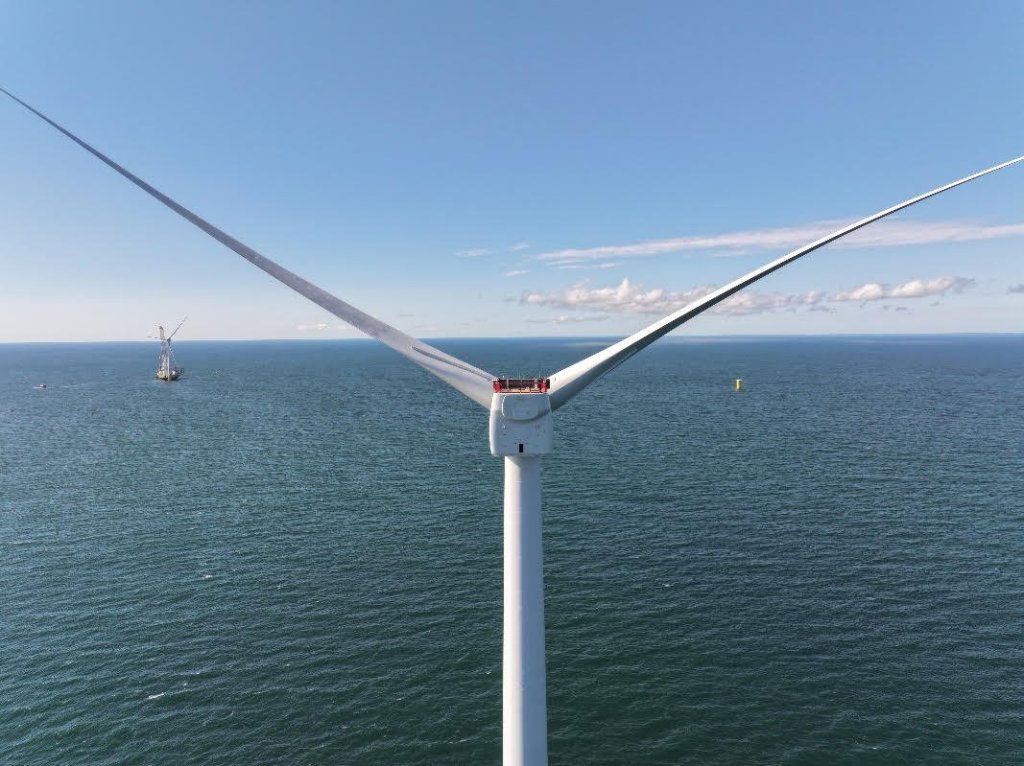Big offshore wind farms are now transmitting sweet, sweet battery juice to the US grid

Offshore wind turbines at two commercial-scale sites are now sending power to the U.S. grid.
Moments before midnight on Tuesday, a single turbine near Martha’s Vineyard delivered 5 megawatts of renewable energy to the New England grid, developers said. The turbine is one out of 62 planned for Vineyard Wind 1, an offshore site owned by utility company Avangrid and wind energy investor Copenhagen Infrastructure Partners (CIP). The firms wanted to deliver offshore wind power via the site before the end of 2023; they missed that goal by just a few days.
Still, Massachusetts Governor Maura Healey called it a “historic moment.” Healey said in a statement that the farm will soon crank out “power equivalent of over 400,000 Massachusetts households.” Avangrid and CIP say the site will feature five turbines by “early” this year, to power up homes — and presumably some electric-vehicle batteries — in the otherwise natural gas-reliant state.
The Vineyard Wind news comes about a month after another offshore site near Montauk Point, New York declared a similar breakthrough. Dubbed South Fork Wind, the offshore wind project so far has two turbines installed, with one operating. The owners — Danish energy firm Ørsted and utility company Eversource — say they’ll install 10 additional turbines in early 2024.
Yet, U.S. offshore wind has suffered some blows recently, in spite of support from the Biden administration, which made offshore turbines a key part of its strategy to reduce climate pollution.
In October, Ørsted canned two wind projects in New Jersey over supply chain delays and high interest rates. Around the same time, Avangrid paid $16 million to cancel an agreement to sell power to Connecticut, though the project itself was not cancelled. And on Wednesday, Fossil fuel giants BP and Equinor scrapped their “Empire Wind 2” contract with New York — also over interest rates and supply chain issues. In a nutshell: Commercial-scale offshore wind projects take a long time to come online. Projects planned before the pandemic look a lot less feasible now than they once did, as far as costs and rates go.
Several startups aim to drive down the price of wind energy. SkySpecs, for example, uses drones and AI to monitor wind turbines, predict equipment failures and ultimately reduce turbine downtime. The Goldman Sachs-backed startup has secured $118 million to date, including an $80 million Series D in 2022.
Another startup built around wind energy is Aerones. The firm makes robots that scrub and inspect turbine blades, to keep turbines operating longer and mitigate pollution from oil leaks. Backed by Y Combinator, Aerones said Wednesday that it secured a roughly $4.8 million grant from the European Union’s Innovation Fund.
There’s also Breakthrough Energy-backed AirLoom, which aims to halve the cost of wind power by embracing a nontraditional design; if you ask me, it looks more like a contemporary art installation than a wind farm.






